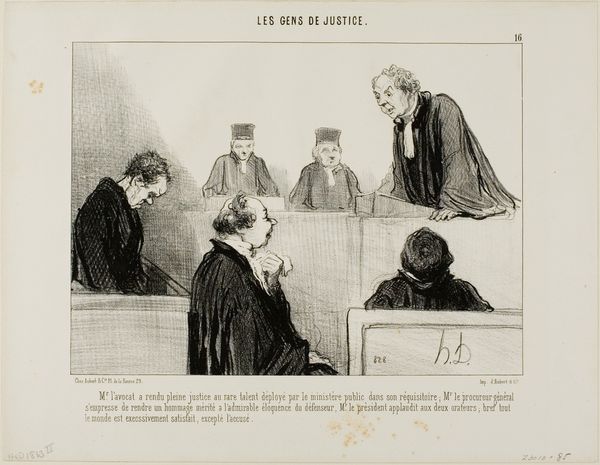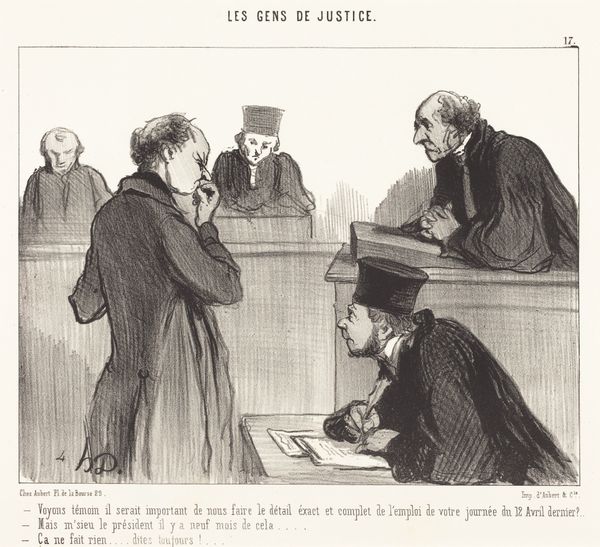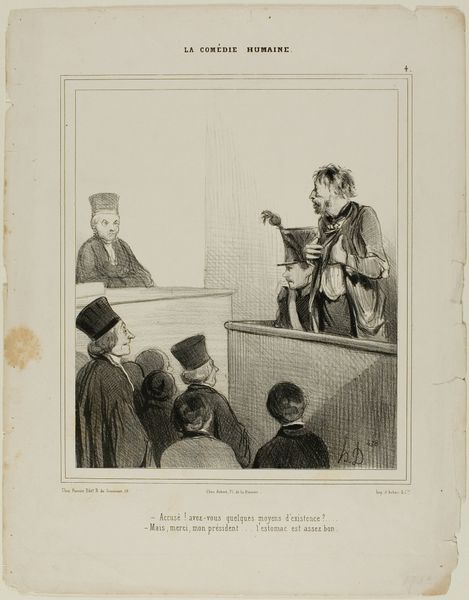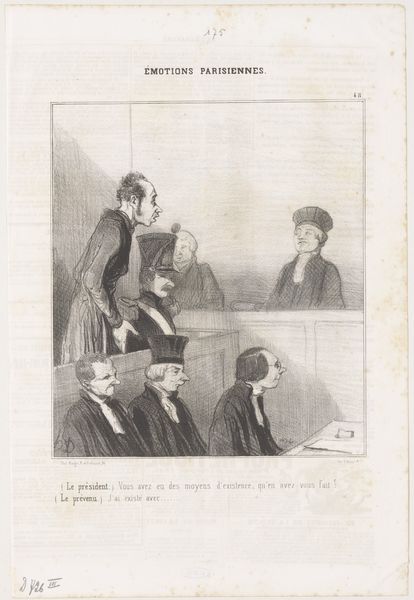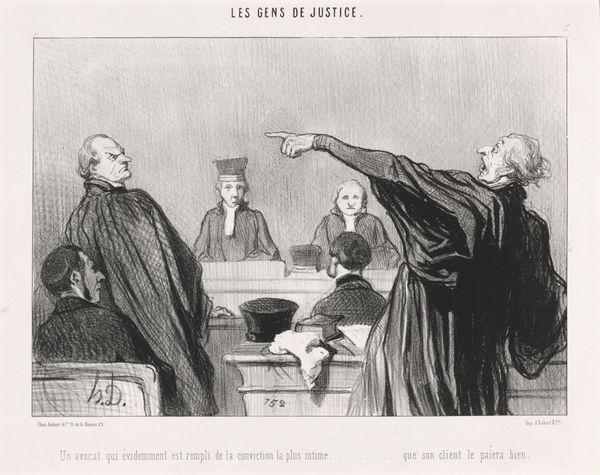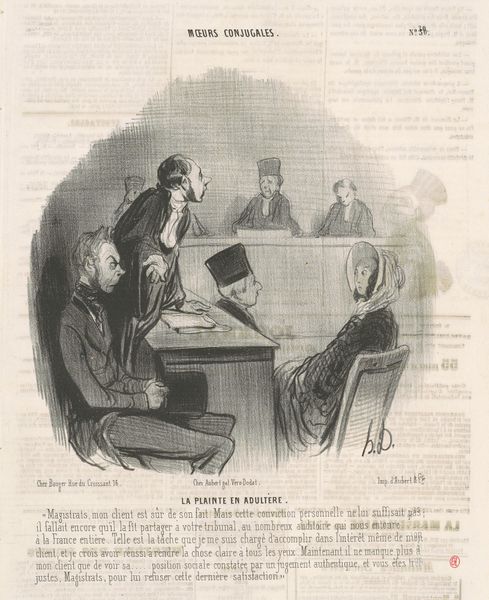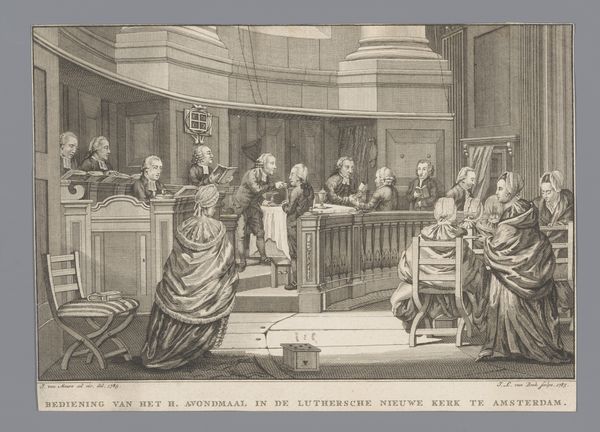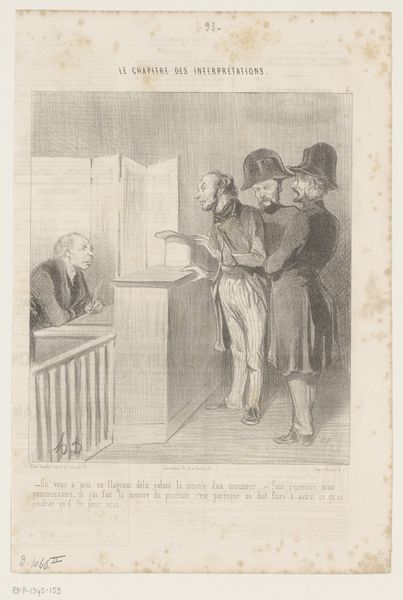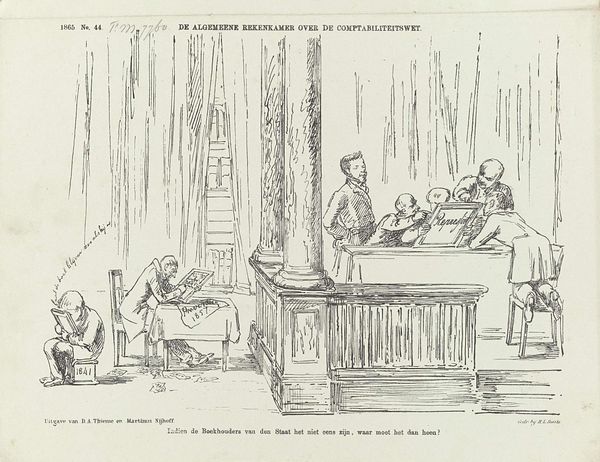
“- The Court, having weighed the evidence and apportioned the advantage accruing from the dereliction, abrogates the appeal and all similar procedures, discharges the appellant and amends the judgement of the lower Court in respect to the costs of th respondent, with the exception of a forfeiture payment to Advocate Bizotin in respect of the final judgement, and hereby dismisses both parties as aforementioned. - My God, what a verdict..... my lawyer will ask for at least seventy five francs to explain this to me.....,” plate 4 from Les Gens De Justice 1845
0:00
0:00
drawing, lithograph, print, paper, pen
#
drawing
#
narrative-art
#
lithograph
# print
#
caricature
#
paper
#
pen
#
genre-painting
#
academic-art
Dimensions: 185 × 256 mm (image); 253 × 334 mm (sheet)
Copyright: Public Domain
Curator: Daumier's lithograph from 1845, “The Court…”, strikes me first as a critical commentary on the justice system. It's more than just a scene; it’s a statement on labor and power structures, wouldn’t you agree? Editor: It's created from lithograph, ink, and paper, seemingly humble materials that produce a potent image. What's especially revealing, from your point of view? Curator: Consider the means of production: lithography allowed for relatively mass production and dissemination. Daumier skillfully used this accessibility to reach a wider audience, presenting social critique outside the elite circles of traditional art patronage. Note how his academic style ironically clashes with his message, accessible materials being used for socially elevated statements. Editor: So the materials themselves contribute to the meaning, expanding his reach. What about his portrayal of the figures? Is there a labor aspect within the justice depicted? Curator: Absolutely. Look at the faces—the fatigue, the indifference, perhaps even corruption. These are laborers of law, and Daumier doesn’t flatter them. Their social function, intertwined with class and economic disparities, is laid bare through his attention to detail. Notice how laboring bodies create these inequities; not as the function of detached ideal principles. Do you agree? Editor: It is fascinating how the image underscores the materiality of labor in maintaining what is assumed to be abstract principles of law, and contrasts with the inaccessibility to most, judging from the bewildered character on the right of the print! Thank you, I am appreciating a side of art production and messaging that I hadn’t really considered.
Comments
No comments
Be the first to comment and join the conversation on the ultimate creative platform.

